How to Buy, Trim & French Lamb Chops
This quick tutorial and accompanying video Trimming Lamb walks you through how to buy, trim, and prepare lamb rib chops using a technique known as frenching. Then once you've got that mastered, grab our recipe for Grilled Lamb Chops with bistecca oil and put your new skills to work.
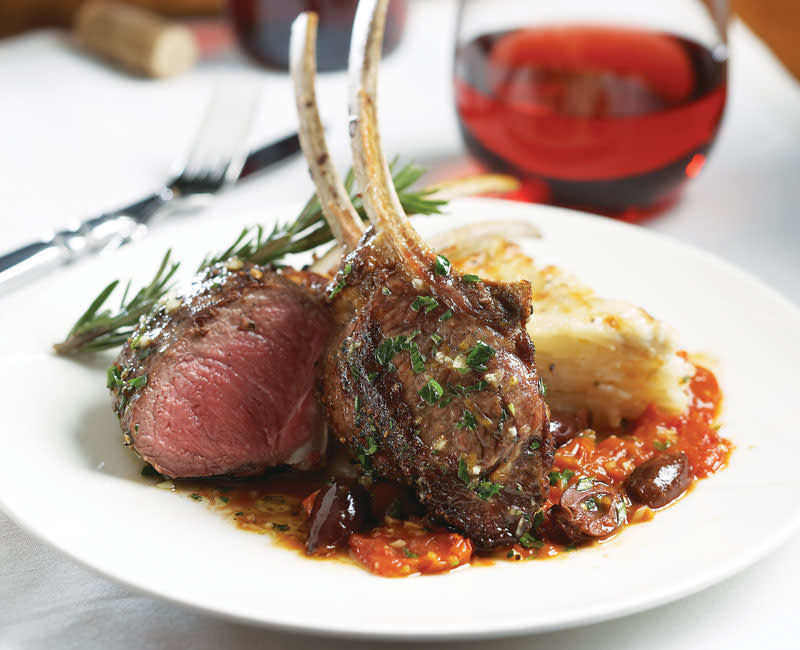
The long and short of it
If you’ve never purchased lamb chops before, it can be a little confusing, so here’s what you need to know.
There are two types of lamb chops available — rib (below, left) and loin chops (below, right).

A rib chop is lamb’s version of a ribeye steak with the bone still attached. The loin chop is a tiny t-bone steak, containing meat from both the tenderloin and the short loin.
If you’re looking for the show-stopper with the long bone, buy rib chops. They can be purchased three different ways and that’s what we’ll focus on here.
BUYING CHOPS:
Untrimmed chops have the entire fat cap in place covering all of the bones.
Semi-frenched chops have a portion of the fat removed with some bone exposed.
Fully frenched chops have the majority of fat removed and several inches of the rib bone exposed and cleaned. If this is what you want, you might have to special order them from your butcher—so expect to pay a premium.
Loin chops, are another option that’s just as good, more economical, and a lot less fussy.
NOTE: However you choose to buy rib chops, be sure the chine bone (spine) has been removed or else slicing will be tricky. A flat ridge of bone at the bottom of the meaty portion of the rack is your indication that it’s still there.
HOW TO FRENCH LAMB RIB CHOPS:
Frenching the racks yourself takes time but saves a chunk of change. Watch the online video Trimming Lamb, then follow the four steps here. It’s not as hard as you think. And once you've mastered how to french the chops, then try your hand at grilling and serving the chops bistecca-style with this easy recipe: Grilled Lamb Chops with bistecca oil.
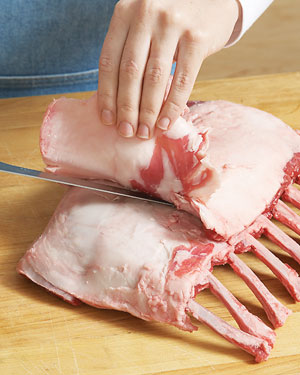
Trim off the thick fat cap from the top of the lamb rack, making short, shallow strokes with the tip of a boning knife.
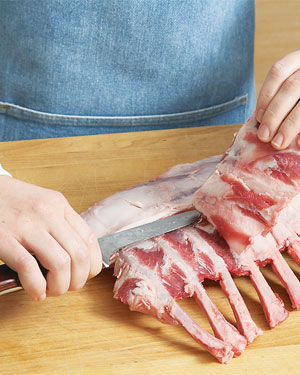
To expose more of the bone and remove more fat, lay the knife flat against the bone and cut away from yourself.
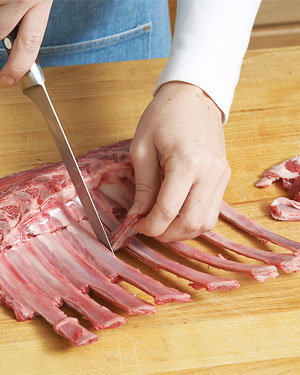
On the back of the rack, score the base of the bones, then remove the tissue between them down to the score mark.
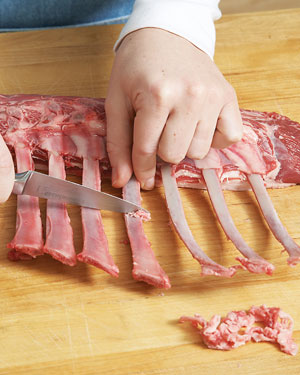
Scrape away tissue clinging to the bones using the back of a paring knife. It’s fine if they’re not perfectly clean.
Product Recommendations
Interested in cooking? Need some supplies?
Check out some of the tools we like. All products featured on Cuisine at Home are independently selected by our editors; we may earn an affiliate commission from qualifying purchases through our links.